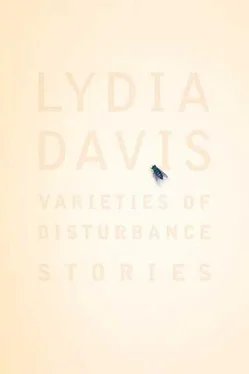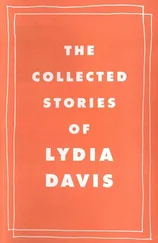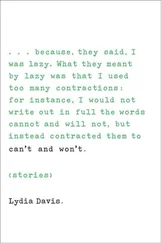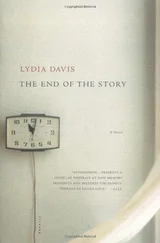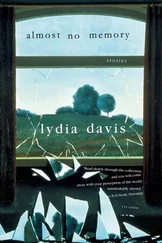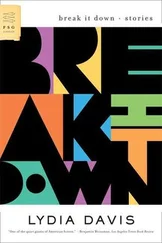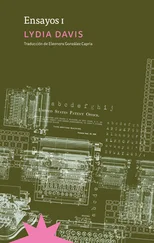It could be argued that Scott, too, achieves a certain pleasing balance with his alternation, in the four sentences of his cogent letter, between “over there” and “here where we are,” “up there” and “back here again,” in fact creating a seesaw motion and thereby tying Stephen more closely to the class than any of the other children.
Content
Some of the letters are bland and/or inexpressive, while others are more informative and more colorful, and/or express their writers’ personalities more vividly.
Probably the blandest letter, in that it includes all the most commonly expressed formulaic sentiments and only the most general “news,” with no departures from convention in content or style that would express an individual personality, is Maureen’s. Although it is undeniably friendly and cheerful, the friendliness and cheerfulness seem somewhat rote: “How are you feeling? I miss you very much. I hope that you will be back in school soon. I like school very much. I had a very nice time in the snow.” Her handwriting is round and slants consistently to the right with one notable exception: the word I , which is vertical. It may not be going too far to suggest that these markedly contrasting I ’s express a sublimated rebelliousness, a suppressed desire to be less conformist and obedient than she evidently is.
Another fairly bland letter, in a small, round script, is Mary’s, although she is slightly more emphatic than Maureen—“We all miss you very much”—and adds one specific: “I have had lots of fun playing with my sled in the snow.”
The content can be generally summarized as falling under the following headings, within the two more general categories of expressions of sympathy and “news”:
Formulaic Expressions of Sympathy
come back soon/wish you were here (17 occurrences in 27 letters)
how are you/hope you are feeling better (16)
miss you (9)
experience in hospital/food (4)
empathy: I know how it feels (2)
News
playing in snow (9)
Christmas/Christmas presents (7)
school/schoolwork (4)
eating/food (4)
weather (3)
shopping with parent (2)
movies (2) pets (1)
New Year’s Eve (1)
Stephen’s family (1)
party (1)
Formulaic Expressions of Sympathy
Miss You
Many of the children’s letters include the standard “We [or I] miss you” or “We [or I] miss you very much,” often paired with “We [orI] hope you will be back soon.”
Van opens with those two sentiments and then finds himself at a loss: in thin, tremulous handwriting, with so little space between the words that they almost touch, he closes with “I think that is all to say [ sic ] because I just can’t think.” Some of Van’s letters sit nicely on the line, some float up above it, and some sink below it. It is possible, in his case — as in others in which the child betrays some anxiety — that the letters do not sit on the line because the child is overcompensating: for fear of letting his letters sink below the line, he keeps them up off the line; for fear of letting them float up off the line, he forces them down below it. We must remember, when imagining these children learning to write neat script, that a line is not an actual resting place for a letter. It is a conceptual mark, and a very thin one, and a beginning writer finds it difficult to touch that line exactly with each letter. There is thus a certain amount of anxiety, for some children, even in the act of writing script, regardless of what they are trying to express.
Joan is more specific, and thus more poignant, immediately evoking the classroom: “I miss you in our row in school.” She conveys, in addition, a sense of solidarity among the children in that particular row—“our row.”
Sally is even more specific, and her letter, though one of the briefest, carries the most powerful, and the darkest, emotional burden: “Hope you are feeling better. Your seat is empty. Your stocking is not finished.” This last sentence is followed by a period, but then, ambiguously, by a lower-case b , so that we cannot be sure whether Sally meant to continue the sentence or begin a new one when she goes on to say, again dwelling on darker possibilities: “but I don’t think it will be finished.” The function of the but is also unclear. Sally’s handwriting is faint and thin, and the letters extremely small, except when, as she has evidently mistaken the teacher’s instructions, the tall letters such as f and l extend hesitantly all the way up to touch the line above. The content, along with the brevity of the letter and Sally’s small handwriting, would seem to indicate either an innate pessimism or a low self-esteem, despite the quite exceptional exuberance and panache of her capital H .
How Are You/Hope You Are Feeling Better
Another commonly expressed sentiment is: “We [or I] hope you are feeling well/will feel better soon/will get well soon/how are you feeling?”
Billy J. opens with “I hope you are feeling well,” closes with “I hope you will be back soon,” and adds only one sentence in between: “We are not doing much.” The words “not doing much” are smaller and more compact than the rest, perhaps reflecting the content of the remark. Billy’s letters also tend to sink below the line, according well in spirit with his only news — that not much is being accomplished.
Lois strikes a conversational note that is stylistically unusual among the letters when she writes, in bold black script that sits squarely on the line but sometimes disappears off the right side of the page: “How are you feeling now? Better, I hope.”
Joseph A., instead of writing “How are you?” writes “How do you?” The teacher does not notice this.
Come Back Soon/Wish You Were Here
Lois, who manages eight sentences within the space of her six lines, expresses this sentiment twice, once at the beginning—“When will you be back?”—and once, employing a courteous command, at the end—“Please try to come back soon.”
Carol’s letter, as quoted above, adds the intensifying explanation “because it is lonesome without you”—either quite sincere, since she lives next door to Stephen and may be a close friend, or at least polite. It should be noted that Carol stands in a privileged relationship to Stephen, since their families are also friends, as her letter clearly indicates.
The enthusiastic Joseph goes further, expressing impatience: “I can’t wait until you come back to school.”
Stephen’s friend Jonathan, whose handwriting is well-rounded and upright, each letter sitting firmly on the line, uses almost the same words: “I can hardly wait until you will be home again.” Presumably, Jonathan replaces the more common “back to school” with “home again” because he is not only a good friend but a neighbor.
One girl, Diane, expresses the same sentiment in almost the same words—“I can hardly wait for you to come back to school”—and then reinforces it with a second sentence that employs two imperatives: “Hurry up and come back.”
Her friend Mary K. expresses it more precisely and rather severely, hoping that Stephen “will be back in school in a very short time.”
Billy T. emphasizes Stephen’s discharge from the hospital rather than his return to school. He also devotes two of the three sentences of his brief letter to this idea: “When will you be out? I hope you will be out soon.”
Another boy, Scott, expresses this sentiment in one of the most cogent letters, in which each sentence follows logically from the one preceding. He begins with empathy: “I know how it feels over there,” and then develops his idea, first repeating his expression of empathy (unusual among the letters): “I think you would like to be here where we are.” Now he adds a note of drama, along with a rare use of the subjunctive: “And if I were up there I’d yank you out of bed.” Finally he completes his back-and-forth structure with another reference to the school and the logical—“Then”—result of his imagined action: “Then you could be back here again.” (Scott’s phrases “over there” and “up there” signal his awareness that the hospital is some distance from the town and on an elevated site, a fact supported by Jonathan’s identical use of “up there” and a third child’s reference to “Hospital Hill” in a description of sledding.)
Читать дальше
